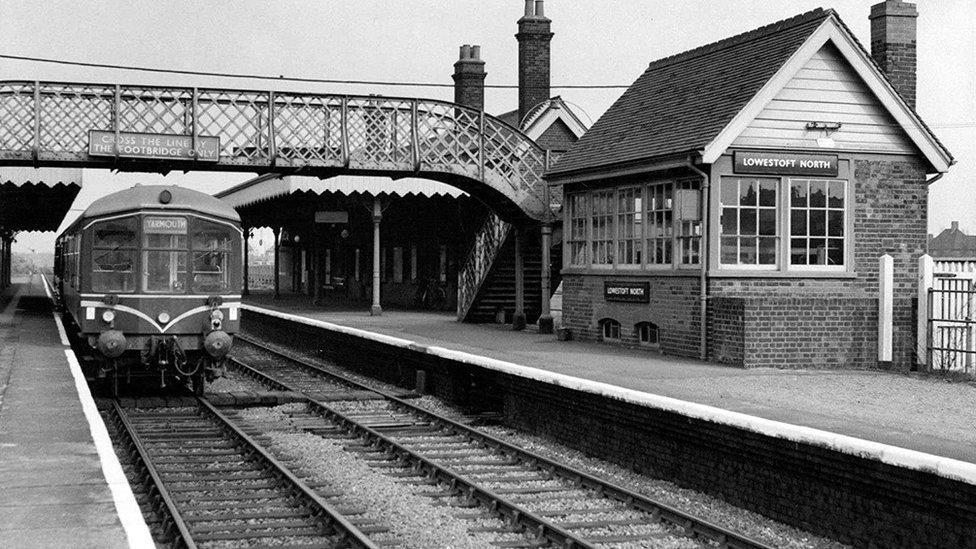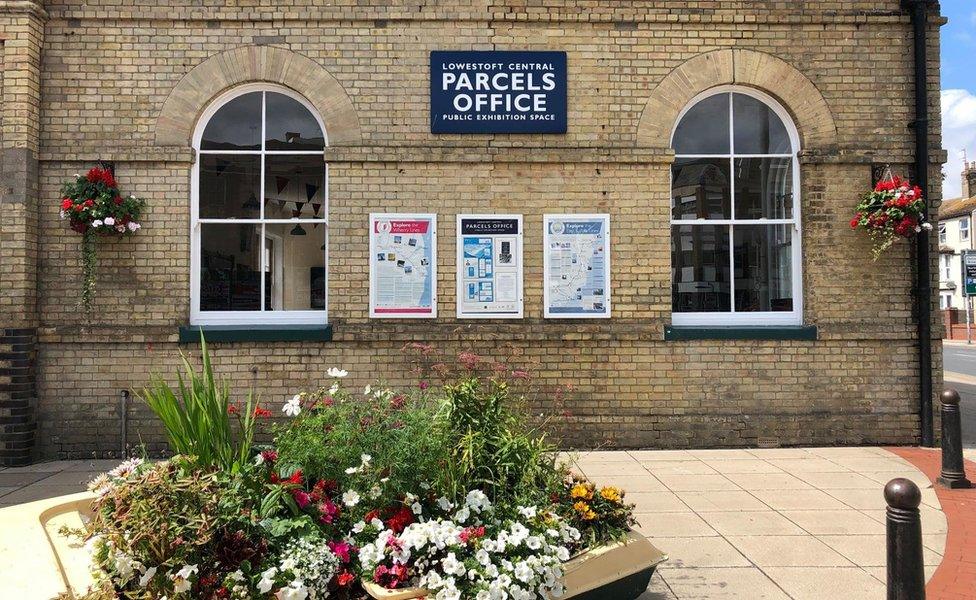Lowestoft to Great Yarmouth railway to be celebrated 53 years on
- Published

Built in 1903, the Lowestoft to Yarmouth railway served stations including Gorleston-on-Sea, Hopton-on-Sea and Lowestoft North
A railway line that linked two coastal towns in neighbouring counties is to be celebrated at an exhibition 53 years after its closure.
The Lowestoft to Great Yarmouth line closed in May 1970, after it was deemed uneconomic to run.
Built in 1903, the route ran from Lowestoft Central in Suffolk to Yarmouth Beach Station in Norfolk, serving communities including Gorleston-on-Sea.
The exhibition will start on Saturday.
It will feature material organisers Community Rail Norfolk and Wherry Lines Community Rail Partnership received when the exhibition was originally staged online in 2020, due to the Covid-19 pandemic.
It is now being held at Held at Lowestoft Railway Station.
Martin Halliday, development officer at Community Rail Norfolk, said: "The line had a relatively short working life of just 67 years, with very few images in the public domain.
"We were extremely grateful that so many people came forward to share their memories and images for our online exhibition marking the 50th anniversary of the closure and we are delighted to now be able to mount a physical exhibition featuring much of the fascinating information received."
When it was open, the line was operated by a joint committee comprising of the Great Eastern Railway (GER) and the Midland and Great Northern Joint Railway (M&GNJR).
It went across the Bure Railway Bridge and five-span Breydon Viaduct, serving stations at Yarmouth South Town, Gorleston North, Gorleston-on-Sea, Hopton-on-Sea, Corton, Lowestoft North and Lowestoft Central.

The exhibition will be open at the parcels office at Lowestoft Railway Station until 13 May, except Sundays and 6 May
Wherry Lines said in 1968 an inquiry into the proposed closure of the line claimed the it served between five and ten thousand people per week and was running at a loss of £34,000 a year.
By 1970 the route was deemed uneconomic and despite a local effort to keep the line running as a tourist attraction, full closure came on 4 May that year.
Wherry Lines said the expansion of towns and villages along the route meant the line was "much missed" today.
The exhibition will be held at the parcels office at Lowestoft Railway Station until 13 May, except Sundays and 6 May.

Find BBC News: East of England on Facebook, external, Instagram, external and Twitter, external. If you have a story suggestion email eastofenglandnews@bbc.co.uk, external